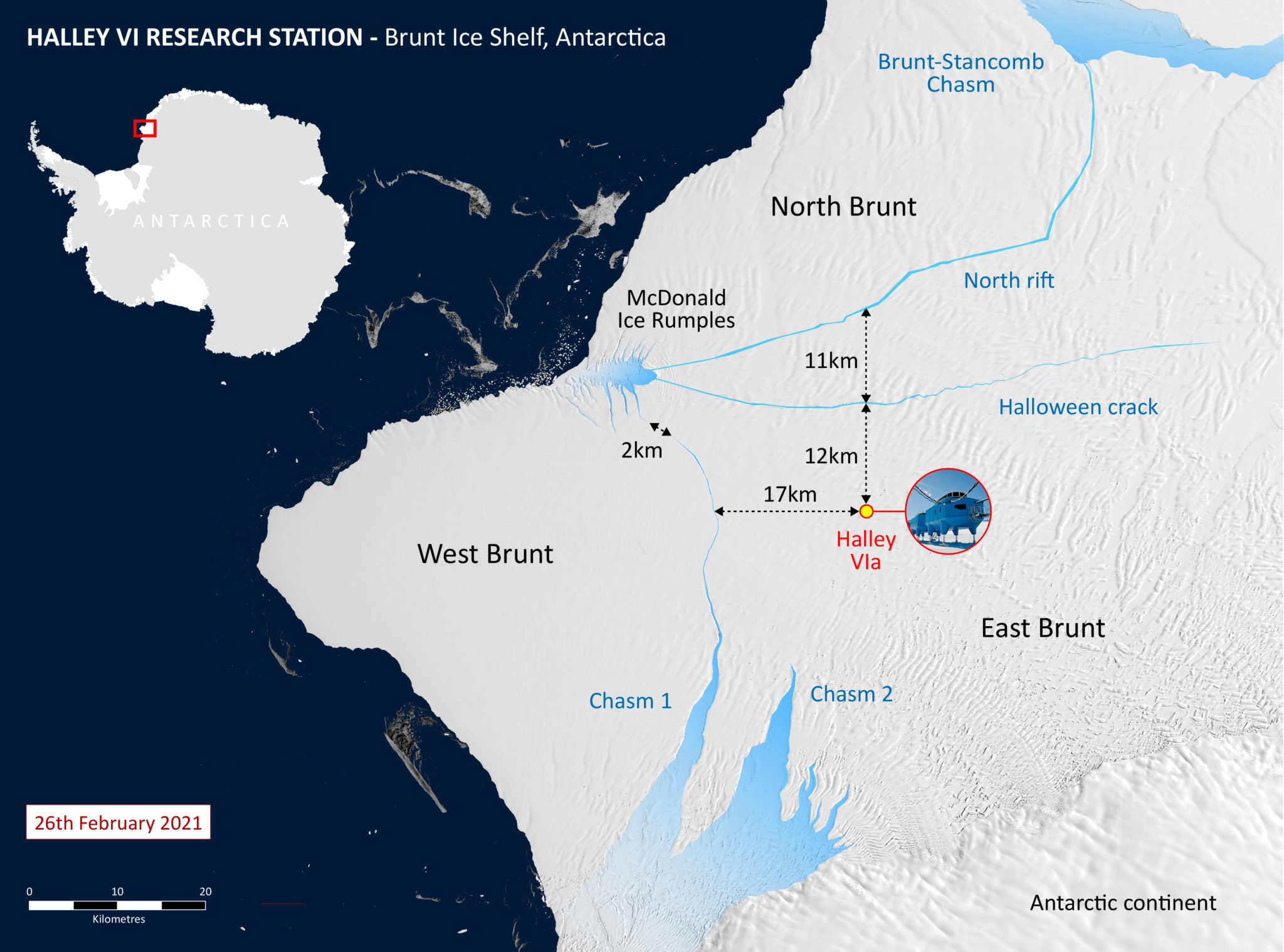Countdown to Calving at Antarcticas Brunt Ice Shelf Art
Behemothic crack frees a massive iceberg in Antarctica

A giant iceberg, more than 20 times the size of Manhattan, simply split off from Antarctica's Brunt Ice Shelf. This dramatic breakup comes after a major crack formed on the shelf in November 2020 and connected to grow until the 'berg finally bankrupt off Friday morning (Feb. 26).
The and then-called "North Rift" crack is the third major chasm to actively tear across the Burden Ice Shelf in the terminal decade, and so scientists with the British Antarctic Survey (BAS) were admittedly expecting the split.
"Our teams at BAS take been prepared for the calving of an iceberg from Brunt Ice Shelf for years," Dame Jane Francis, the manager of the BAS, said in a argument. "Over [the] coming weeks or months, the iceberg may motility away; or it could run aground and remain shut to Brunt Water ice Shelf." (Icebergs are pieces of ice that take cleaved off from glaciers or ice shelves and are now floating in open up water, co-ordinate to the National Oceanic and Atmospheric Assistants).
Related: Photos: diving beneath Antarctica's ross ice shelf
The North Rift crack grew toward the northeast at a rate of about 0.half-dozen miles (1 km) per day in January; just on the morning time of February. 26, the cleft widened a couple hundred meters in just hours. This water ice split happened due to a natural process, and in that location's no evidence that climatic change played a role, according to the statement. The Brunt Ice Shelf, a 492-foot-thick (150 meters) slab of ice, flows west at 1.two miles (two km) per year and routinely calves icebergs.
This iceberg, even so, happened to be very big, with an estimated size of nigh 490 square miles (1,270 foursquare km).
"Although the breaking off of large parts of Antarctic ice shelves is an entirely normal office of how they work, large calving events such as the 1 detected at the Brunt Ice Shelf on Friday remain quite rare and exciting," Adrian Luckman, a professor at Swansea Academy in Wales who was tracking the shelf through satellite images in the last few weeks, told the BBC.

The Brunt Ice Shelf is dwelling house to the BAS Halley VI research station, where scientists observe atmospheric and space weather; but the station volition likely not be affected past this splitting, according to the statement.
Related: Photos: Behind the scenes of an Antarctic inquiry base of operations's relocation
In 2016, the BAS relocated the station 20 miles (32 km) inland to avoid the two other major cracks in the ice shelf known as "Chasm one" and the "Halloween Crack," both of which haven't widened any further in the past xviii months, according to the statement.
The research station is at present closed for winter, and the 12-person team left Antarctica earlier in February. Because of the unpredictability of iceberg calving, and the difficulty of evacuating during the dark and frigid winters, the research squad has been working at the station only during the Antarctic summer over the by iv years.
More than than a dozen GPS monitors measure and relay information about ice deformation of the shelf back to the team in the U.K. every 24-hour interval. The researchers besides use satellite images from the European Infinite Agency, NASA and the German satellite TerraSAR-X to monitor the ice.
"Our job now is to keep a close eye on the state of affairs and assess any potential bear upon of the present calving on the remaining ice shelf," Simon Garrod, the BAS director of operations, said in the argument.
Originally published on Live Science.
Source: https://www.livescience.com/brunt-ice-shelf-breaks-antarctica.html
0 Response to "Countdown to Calving at Antarcticas Brunt Ice Shelf Art"
Post a Comment